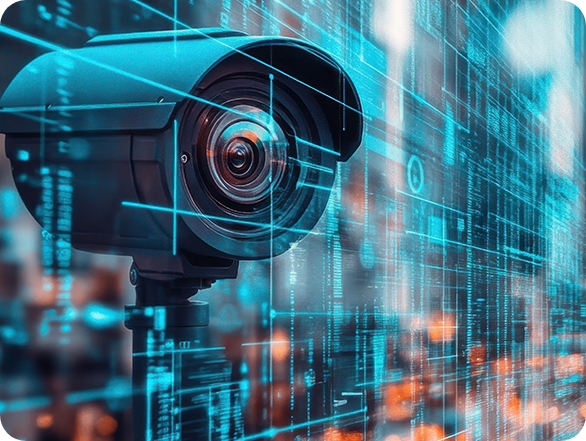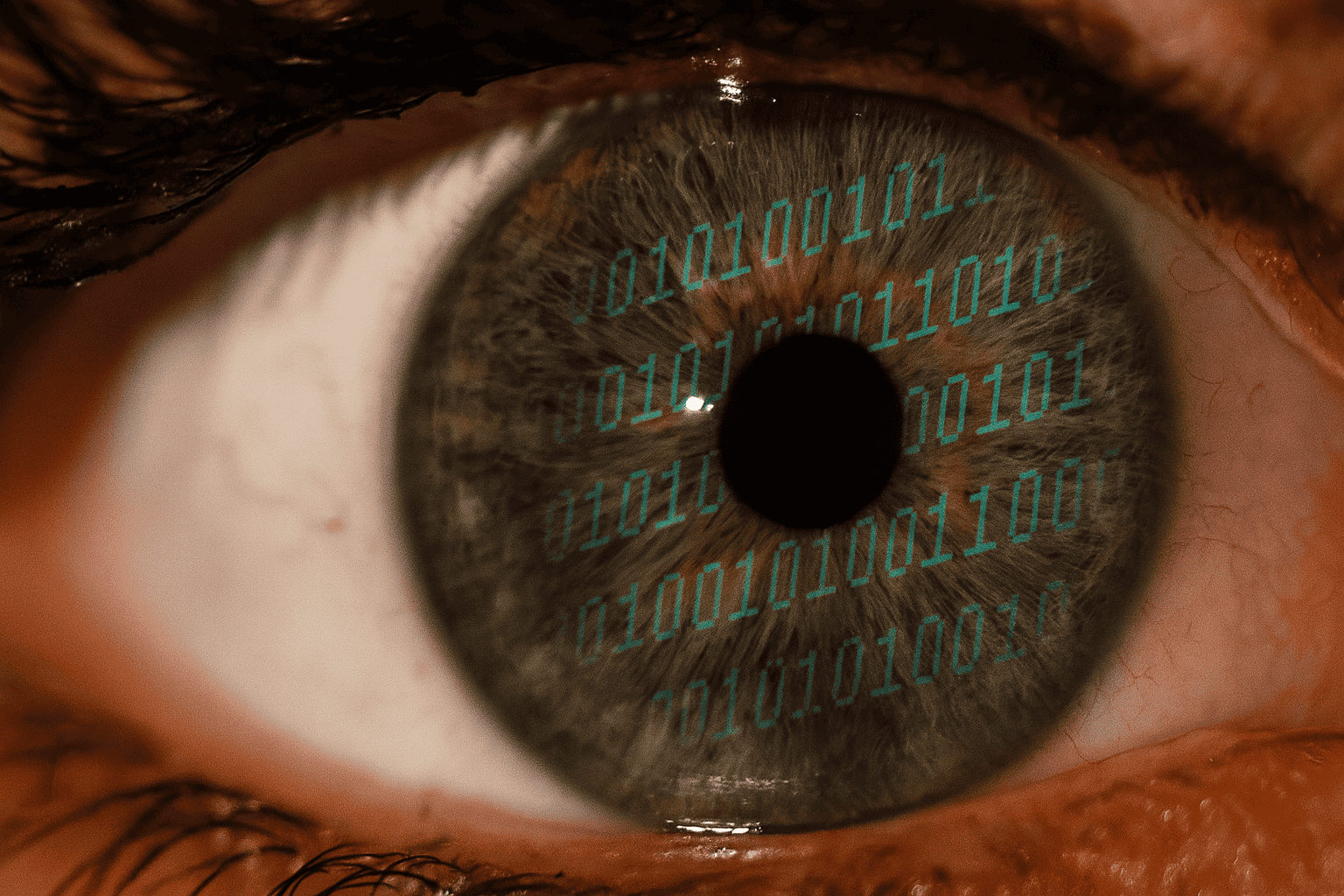The video analytics market is undergoing rapid transformation, driven by advances in artificial intelligence, machine learning, and computer vision technologies. Valued at approximately USD 12.7 billion in 2024 and over USD 15 billion in 2025, the market is projected to grow at a compound annual growth rate of 19.5% through 20301. This growth reflects how organizations across industries are leveraging these advancements to extract actionable insights from video data, moving far beyond traditional security applications. Here are the 10 most significant trends currently driving innovation in the video analytis space.
1. AI-Powered Behavioral Analytics
Video analytics has evolved from simple motion detection to sophisticated behavioral analysis. As Mats Thulin of Axis Communications notes, “AI remains one of the most powerful and transformative technologies within the video surveillance industry today”2.
Modern AI algorithms can now recognize complex patterns in human movement, identifying suspicious activities or customer behaviors with remarkable accuracy. “The shift from rule-based to AI-driven behavioral analytics represents a quantum leap in capabilities,”explains Dr. Mei Zhang, AI Research Director at TechVision Analytics.
Many of these AI-based systems conduct real-time video analytics directly on the device or using on-premises servers. Companies use them primarily for better surveillance and more efficient operations. “Clients demand reliable, cost-effective analytics that support their security and operational excellence. As an end-to-end provider we provide both.” as noted by Pawel Styczynski, CEO of Vidiana.
2. Edge Computing and Camera-Level Processing
One of the most significant innovations taking off in 2025 is the expansion of edge computing. As video analytics systems grow more sophisticated, the volume of data requiring processing has increased exponentially. Edge-enabled AI surveillance cameras now feature processors that allow real-time video monitoring and analysis without constant streaming to central servers.
Industry experts confirm this trend is no longer experimental: “Edge analytics are no longer experimental: they are practical and reliable”3, according to observations reported by SecurityInfoWatch.
This approach offers several advantages:
- Drastically reduced bandwidth requirements
- Near real-time analytics with minimal latency
- Enhanced privacy by processing sensitive data locally
- More resilient AI security camera systems in environments with limited connectivity
“Edge-based analytics provides immediate insights where they’re needed most,” notes Sophia Reynolds, CTO of EdgeVision Systems. Industry analysts predict that increasing number of video analytics implementations will incorporate edge computing capabilities, particularly in bandwidth-constrained environments.

3. Real-Time Video Monitoring and AI VMS Platforms
A key trend in 2025 is the emphasis on real-time video analytics. Enterprises and governments alike are investing in AI VMS (video management systems) that consolidate data streams, apply intelligent filtering, and issue quick alerts.
“What we’re seeing today is good competition in the industry and many, many companies coming out with different technologies,” said Tom Cook, Executive Vice President of Hanwha Vision4.
Modern VMS solutions act as central nervous systems for artificial intelligence security systems, combining multiple sources such as AI security cameras, motion detectors, access control, and license plate readers. These platforms not only support high-resolution video feeds but also use AI to perform automatic event classification, risk scoring, and search functions.
4. Hybrid Cloud-Edge Architectures
While cloud-native systems are used in some cases, the industry is increasingly moving toward hybrid architectures that leverage the strengths of both cloud and edge computing. As highlighted by MarketsandMarkets, organizations “leverage advanced analytics tools without heavy upfront investments”5.
Many experts now promote solutions that combine cloud availability with on-premise analytics. “Processing local CCTV streams is quicker and safer on premises. Cloud is still viable for online access to data, footage and insights. As well as for remote management,” says Vidiana’s CEO. The company’s approach combines client’s existing CCTV infrastructure with intelligent on-premises analytics and handy online access.
This hybrid model offers the best of both worlds: the security and speed of local processing with the accessibility and scalability of cloud-based management.
5. Cross-Platform Integration and Ecosystem Development
Video analytics no longer operates in isolation. The most successful implementations integrate seamlessly with other business systems, creating a comprehensive operational intelligence ecosystem.
Modern solutions connect with:
- Access control systems
- Point-of-sale data
- Customer relationship management platforms
- Enterprise resource planning software
- Building management systems
This integration enables organizations to correlate video insights with other data sources, providing a more complete operational picture. For example, retail environments can match visual customer journey data with transaction records to optimize store layouts and staffing.
“The real value emerges when video analytics becomes just one component of a larger intelligence framework,” says Marcus Johnson, Integration Specialist at Enterprise Solutions. “When these systems talk to each other, the combined insights become exponentially more valuable.”
6. Advanced Detection, Tracking, and Analytics Tools
Beyond hardware and platform integration, a defining feature of leading video analytics solutions is the sophistication of their analytics engines. These engines, often trained on millions of labeled frames, can detect anomalies, recognize faces and license plates, track individuals across cameras, and even assess aggression or loitering behavior.
The adoption of AI video analytics software has made it easier for analysts to convert video footage into structured data. Businesses use these insights for everything from security to marketing. In retail, for instance, video analytics tools help optimize shelf layout by analyzing customer movement, while transportation agencies use them to detect stopped vehicles or track traffic congestion.
These tools are becoming essential for both operational efficiency and safety, representing a significant evolution from traditional surveillance systems.
7. Privacy-Preserving Analytics
As video surveillance becomes more pervasive, privacy concerns have prompted the development of analytics solutions that extract valuable insights while protecting individual identity.
Advanced techniques now include:
- Automatic face blurring or pixelation
- Personal data anonymization
- Synthetic data generation for training algorithms
- Federated learning approaches that keep raw video data local
These methods allow organizations to comply with increasingly strict privacy regulations.
“The industry is recognizing that privacy and analytics aren’t mutually exclusive,” explains privacy advocate Elena Kowalski. “The most forward-thinking companies are designing privacy protection into their systems from the ground up rather than treating it as an afterthought.”.
Top companies in video analytics are incorporating transparency and anonymization features directly into their platforms, ensuring that artificial intelligence security systems do not compromise individual rights.

8. Ethical AI Implementation and Human Oversight
While technological advancement in video analytics is impressive, industry leaders emphasize it must be matched with responsible deployment. “We have to caution some end users and consultants on how to use AI,” warned Tom Cook, emphasizing the need for better training and governance in implementing AI-driven surveillance systems6
Ethical concerns such as bias in facial recognition algorithms and the misuse of surveillance footage are increasingly relevant. As the technology becomes more powerful, the focus on ethical implementation is becoming as important as the capabilities themselves.
9. Predictive Analytics and Scenario Modeling
Perhaps the most exciting development in video analytics is the move from descriptive to predictive capabilities. Advanced systems now analyze historical video data to forecast future events and model potential scenarios.
Applications include:
- Predicting traffic congestion based on visual pattern analysis
- Anticipating crowd flow issues at public events
- Forecasting customer demand patterns in retail
- Identifying potential safety hazards before incidents occur
“We’re entering an era where video analytics doesn’t just tell you what happened – it tells you what will happen,” says Dr. James Chen, Director of Predictive Technologies at FutureSight. “This shift from reactive to proactive insights represents the next frontier in the technology’s evolution.”.
Organizations implementing predictive video analytics report significant improvements in operational efficiency and risk management, with some security applications showing significantly faster response times to potential incidents.
10. Hardware-Agnostic and Retrofit Solutions
The final significant trend is the move toward hardware-agnostic solutions that can work with existing infrastructure. As organizations look to modernize without complete system overhauls, providers offering software that can be deployed on existing CCTV systems are gaining traction.
Pawel Styczynski, CEO of Vidiana, highlights this approach as his company provides “hardware-agnostic, quickly deployable software for video analytics” ,that can work with clients’ existing CCTV infrastructure.
This trend is particularly important for organizations with significant investments in legacy systems who still want to leverage the power of modern AI video analytics without starting from scratch.
The future ahead
The video analytics market offers more than just camera feeds – it provides intelligent, real-time insights that help secure assets, streamline operations, and protect people. These systems combine AI video analytics software, hybrid cloud-edge architectures, and real-time video monitoring to deliver truly proactive surveillance.
With intense competition among video analytics companies, the bar has been raised. Today’s solutions are smarter, faster, and more adaptive than ever before. When deployed responsibly, these tools will transform how we understand, manage, and protect the world around us.
- MarketsandMarkets www.marketsandmarkets.com/Market-Reports/video-analytics-market-778.html ↩︎
- Axis Communications blog http://www.axis.com/blog/secure-insights/how-ai-is-reshaping-video-surveillance/ ↩︎
- SecurityInfoWatch www.securityinfowatch.com/ ↩︎
- SecurityInfoWatch http://www.securityinfowatch.com/video-surveillance/article/55023140/ai-in-video-surveillance-industry-perspectives-from-isc-west-2024 ↩︎
- MarketsandMarkets www.marketsandmarkets.com/Market-Reports/video-analytics-market-778.html ↩︎
- www.securityinfowatch.com ↩︎

